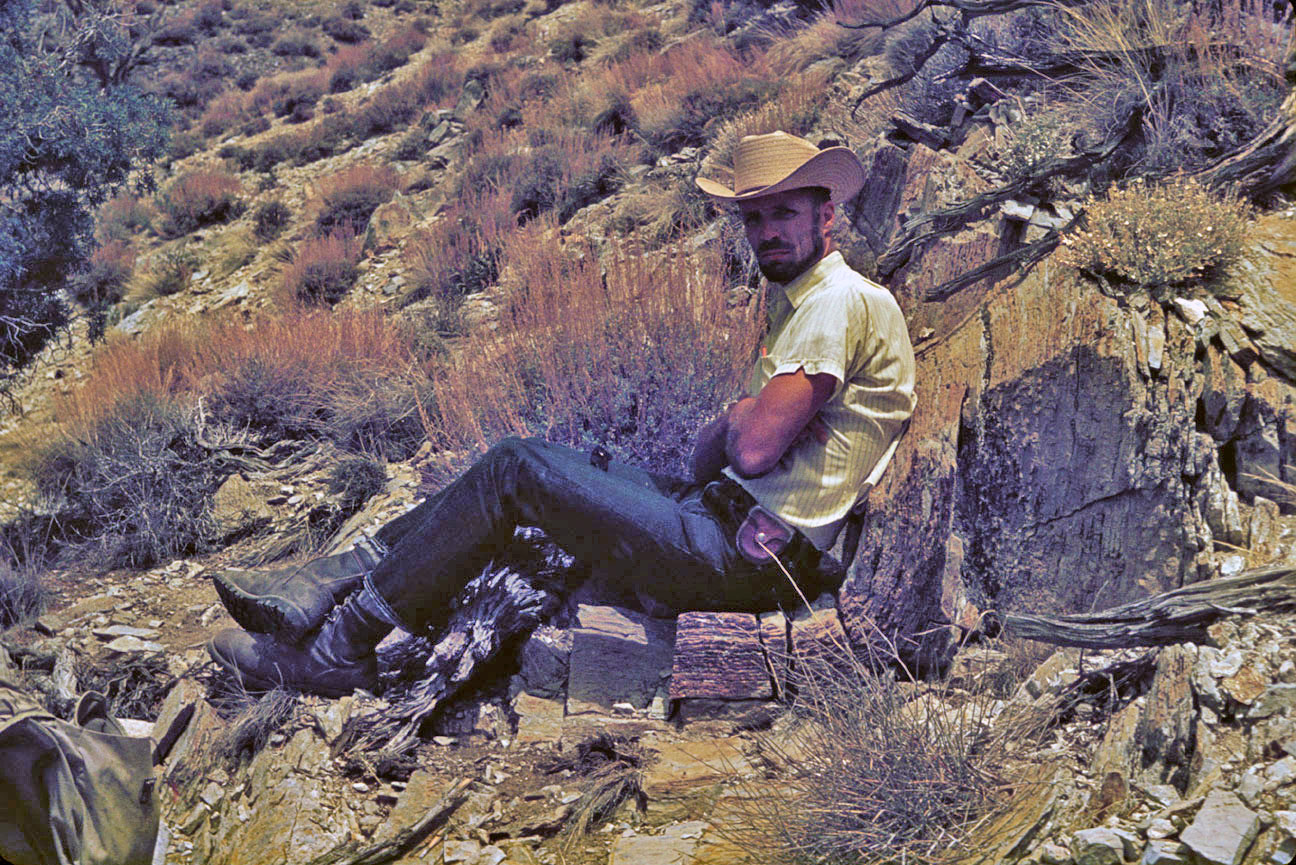Art Sylvester Brings Southern California Geology to Masses
Longtime UCSB Professor Co-Authors ‘Roadside Geology’ and ‘Geology Underfoot’ Books

During 35 years of teaching geology at UCSB, Art Sylvester led more than 300 field trips, mostly across Southern California, providing the professor repeat lessons on the region’s many ridges, canyons, and landforms of interest as seen from the major roads. While crossing the Mojave Desert on the way back from a Bryce Canyon family vacation in 2013, Sylvester realized yet again that he knew quite a bit about this and that mountain.
“I know things that students these days will never know because they’re in their computers and not in the field,” he mused. “I ought to write a book about this.”
About a quarter century earlier, he’d been asked to do just that by Mountain Press, which has published the popular Roadside Geology guides since 1972. But Sylvester was too busy at the time. When he called the publisher this time, they were still ready — indeed, they’d been hoping for a sequel to the Northern California guide since it came out in 1975.
Get the top stories in your inbox by signing up for our daily newsletter, Indy Today.

Four decades later, Roadside Geology of Southern California, by Arthur Gibbs Sylvester and illustrator Elizabeth O’Black Gans, was published in 2016. “It’s what you see driving down the major highways at 65 miles an hour,” explained Sylvester.
Upon later meeting the Mountain Press publisher in person at a convention, Sylvester suggested updating Geology Underfoot in Southern California, first published in 1993 with lots of black-and-white photography. The publisher agreed, so Sylvester sought permission from the original co-author Allen Glazner (the other co-author, Robert Sharp, had died), and the project commenced. In addition to the fresh color photos, Sylvester delivered new chapters on the San Andreas Fault, Devil’s Punchbowl, and the St. Francis Dam. The update was published in 2020, and he’s now updating 1997’s Geology Underfoot in Death Valley, also written by Sharp and Glazner.
Compared to the geographically organized Roadside guides, the Underfoot chapters are vignettes that encourage visitors to “get out of your car, get out there, and walk about the geology,” said Sylvester. But the tone is similar. “We’ve set the books at the level of a first-year graduate student or, you might say, the informed and interested layman,” he explained. “We’re not trying to wow everybody with jargon, and we’re not trying to talk down to everybody.”
Raised in Southern California, Sylvester “backed into geology” as a profession, motivated primarily to work outdoors, but not be a bridge engineer like his father. He became fascinated by geology during biology field trips down the Yampa and Green rivers and Havasu Canyon, and he wound up at Pomona College, thinking that he could make a decent living in petroleum.
He followed the path to grad school at UCLA. “If I kept studying and being a good student, I could avoid going to Vietnam and stopping a bullet,” explained Sylvester, who then rode a Fulbright to Norway before finishing his doctorate at UCLA.
He started working for Shell Oil in Ventura, which is when he was invited by UCSB students to lead a field trip for them to the Inyo Mountains. So impressed, the students demanded that Sylvester be hired onto the faculty, and he was in 1968.

Over his 35 years of teaching, Sylvester preferred teaching field courses. “I gave students some idea of what geology was all about, and how they’re going to have to behave to get a job and keep a job,” he explained. His own research surrounded granite intrusion across the world, from Norway and Italy to the Grand Tetons and Southern California, as well as investigations of the San Andreas Fault.
He’s also been watching coastal erosion from Goleta to Santa Barbara since about 1972, regularly snapping photos and posting them to his website. “That’s more or less hip-pocket stuff,” he said of the nonscientific pursuit. “It’s qualitative work, but I’ve got a pretty good feel for this erosion.” He’s provided expertise to both Goleta Beach erosion studies and UCSB’s own sea-level rise committee.
In his retirement, Sylvester became very active as president and facilities manager of the Santa Barbara Genealogical Society, where he spearheaded a $1 million fundraising campaign at the height of the recession to expand the library. And speaking of lineages, Sylvester is active in the little-known Society for the Preservation and Promulgation of the Name Arthur. Asked about its origins, Sylvester quickly confessed, “Well, I made it up! It took me a while to be proud of my name. Hardly anyone is naming their kid Arthur these days.”
Given the legacy this retired-yet-tireless geologist-author is continuing to leave, maybe that will change.
See mountain-press.com for the books and sylvester.faculty.geol.ucsb.edu for more on the professor.
Every day, the staff of the Santa Barbara Independent works hard to sort out truth from rumor and keep you informed of what’s happening across the entire Santa Barbara community. Now there’s a way to directly enable these efforts. Support the Independent by making a direct contribution or with a subscription to Indy+.




You must be logged in to post a comment.